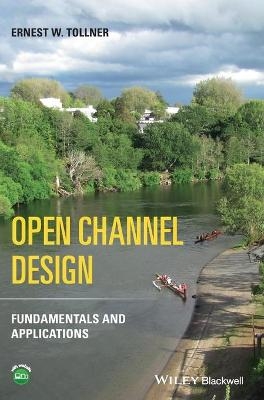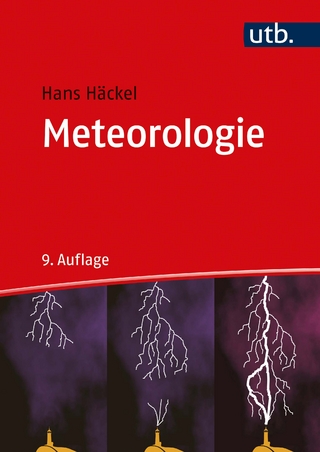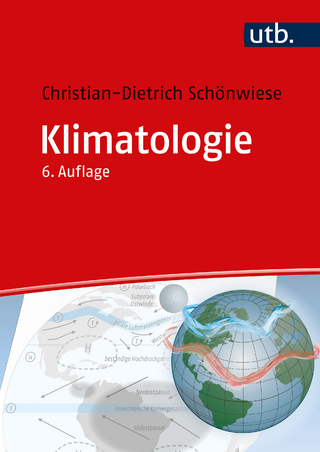
Open Channel Design
Wiley-Blackwell (Verlag)
978-1-119-66424-6 (ISBN)
Open Channel Design: Fundamentals and Applications covers permissible velocity, tractive force, and regime theory design methodologies and applications. Hydraulic structures for flow control and measurement are covered. Flow profiles and their design implications are covered. Sediment transport mechanics and moveable boundaries in channels are introduced. Finally, a brief treatment of the St. Venant equations and Navier-Stokes equations are introduced as topics to be explored in more advanced courses. The central goal is to prepare students for work in engineering offices where they will be involved with aspects of land development and related consulting work. Students will also be prepared for advanced courses that will involve computational fluid dynamics approaches for solving 2-d and 3-d problems in advanced graduate level courses.
Offering a fresh approach, Open Channel Design: Fundamentals and Applications prepares students for work in engineering offices where they will be involved with aspects of land development and related consulting work. It also introduces the reader to software packages including Mathematica, HecRas and HY8, all widely used in professional settings.
Ernest W. Tollner is a native of Maysville, KY and received his BS and MS degrees in agricultural engineering at the University of Kentucky. He did his doctorate at Auburn. He was elected Fellow of the American Society of Agricultural and Biological Engineers in 2012 and served on the ASABE Board of Trustees. He was awarded a Lifetime Achievement Award by Marquis in 2018, and won the Georgia Engineering Educator of the Year Award in 2019.
Preface ix
Acknowledgments xi
About the Companion Website xii
1 Basic Principles and Flow Classifications 1
Fluid Mechanics Foundations 2
Hydrologic Foundations 7
Presentation Organization 8
Problems and Questions 10
References 11
2 Channel Fundamentals 12
Goals 12
Channel Elements and Nomenclature 12
General Flow Relationships 17
Uniform Flow Relationships 17
Theoretical Considerations 23
Natural, Compound, or Sustainable Channels 25
Lined Channels, Optimum Channels, and Velocity Constraints 28
Channel Installation 43
Summary 43
Problems and Questions 47
References 51
3 Vegetated Waterways and Bioswales 53
Goals 53
Background 53
Channel Planning 54
Basic Design Procedures 56
Bioswales 60
Vegetated Filter Strips 62
Temporary Linings 62
Summary 66
Problems and Questions 68
References 69
4 Tractive Force Methods for Earthen Channels 71
Goals 71
Riprap-Lined or Earthen Waterways (Earthen II) 71
Tractive Force for Vegetated Waterways 77
Details and Origins of The Parabolic Cross-section 82
Costing Channel Designs 92
Steady Uniform Flow Conclusion 94
Problems and Questions 95
References 97
5 The Energy Equation and Gradually Varied Flows 98
Goals 98
Energy Preliminaries – Velocity Profiles and Boundary Effects 98
Longer Transitions – Gradually Varied Flow Analyses 115
Conclusions 126
Problems and Questions 126
References 127
6 Momentum Equation for Analyzing Varied Steady Flows and Spatially Varied Increasing Flows 128
Goals 128
Rapidly Varying Steady Flows (dQ/dt = 0, dQ/dx = 0, dy/dx varies) 128
Spatially Varying Steady Flow (dQ/dt = 0, dQ/dx varies, dy/dx varies) 137
Conclusions 142
Problems and Questions 142
References 143
7 Hydraulics of Water Management Structures 144
Goals 144
Structure Types 145
Hydraulic Concepts 147
Stage–Discharge Relationships of Weir Inlets and Flumes 150
Discharge Relations of Orifices and Sluice Gates Inlet Devices 156
Flow Hydraulics of Closed Conduits 157
Stage–Discharge Curves for Culverts and Spillways 167
Closed Conduit Systems for Urban Stormwater Collection 169
Ecologic Suitability 171
Summary and Conclusions 177
Problems and Questions 179
References 182
8 Gradually Varied Unsteady Flow 185
Goals 185
Hydrologic Routing Approaches 187
Kinematic Wave Method 194
Diffusion Wave Method 199
Dynamic Routing 203
Summary and Conclusions 209
Problems and Questions 210
References 211
9 Rapidly Varying Unsteady Flow Applications – Waves 213
Goals 213
Surface Irrigation 213
Sluice Gate and Related Operations 217
The Dam-Break Problem 223
Oscillatory Waves 230
Summary and Conclusions 233
Problems and Questions 234
References 235
10 Channel Design Emphasizing Fine Sediments and Survey of Alluvial Channel Sediment Transport 236
Goals 236
Alluvial Channel vs. Earthen Channel and Other Preliminaries 237
Early Approaches to Sediment Transport 237
Incipient Motion 238
Riprap or Revetment Specification 243
Bedform Descriptions and Analysis 244
Sediment Fall Velocity 245
A Probabilistic Approach to Sediment Transport 249
Einstein (1950)–Laursen (1958)–Graf (1971) Stage–Discharge and Other Hydraulic Calculations 254
Van Rijn (1984) Stage–Discharge and Total Load 259
Total Load by Regression Approaches 264
Sediment Measurement 268
Sediment Routing Through Detention Ponds and Streams 268
Software Support for Estimating Sediment Transport 270
Implications of Sediment Transport on Infrastructure 271
Empirical Channel Design Approaches Leading to Sustainable Channels 274
Forces Impacting Channel Cross Sections – Stream Restoration 281
Summary and Future Directions 286
Problems and Questions 289
References 290
Appendix A Software and Selected Solutions 294
Appendix B Solution Charts for Vegetated Waterways Using the Permissible Velocity Method 305
Appendix C Selected Cost Data for Channel Excavation and Lining Materials 310
Appendix D Design Strategy Summary for Uniform Flow Channels 315
Index 317
| Erscheinungsdatum | 22.10.2021 |
|---|---|
| Verlagsort | Hoboken |
| Sprache | englisch |
| Maße | 170 x 244 mm |
| Gewicht | 794 g |
| Themenwelt | Naturwissenschaften ► Geowissenschaften ► Allgemeines / Lexika |
| ISBN-10 | 1-119-66424-1 / 1119664241 |
| ISBN-13 | 978-1-119-66424-6 / 9781119664246 |
| Zustand | Neuware |
| Haben Sie eine Frage zum Produkt? |
aus dem Bereich


